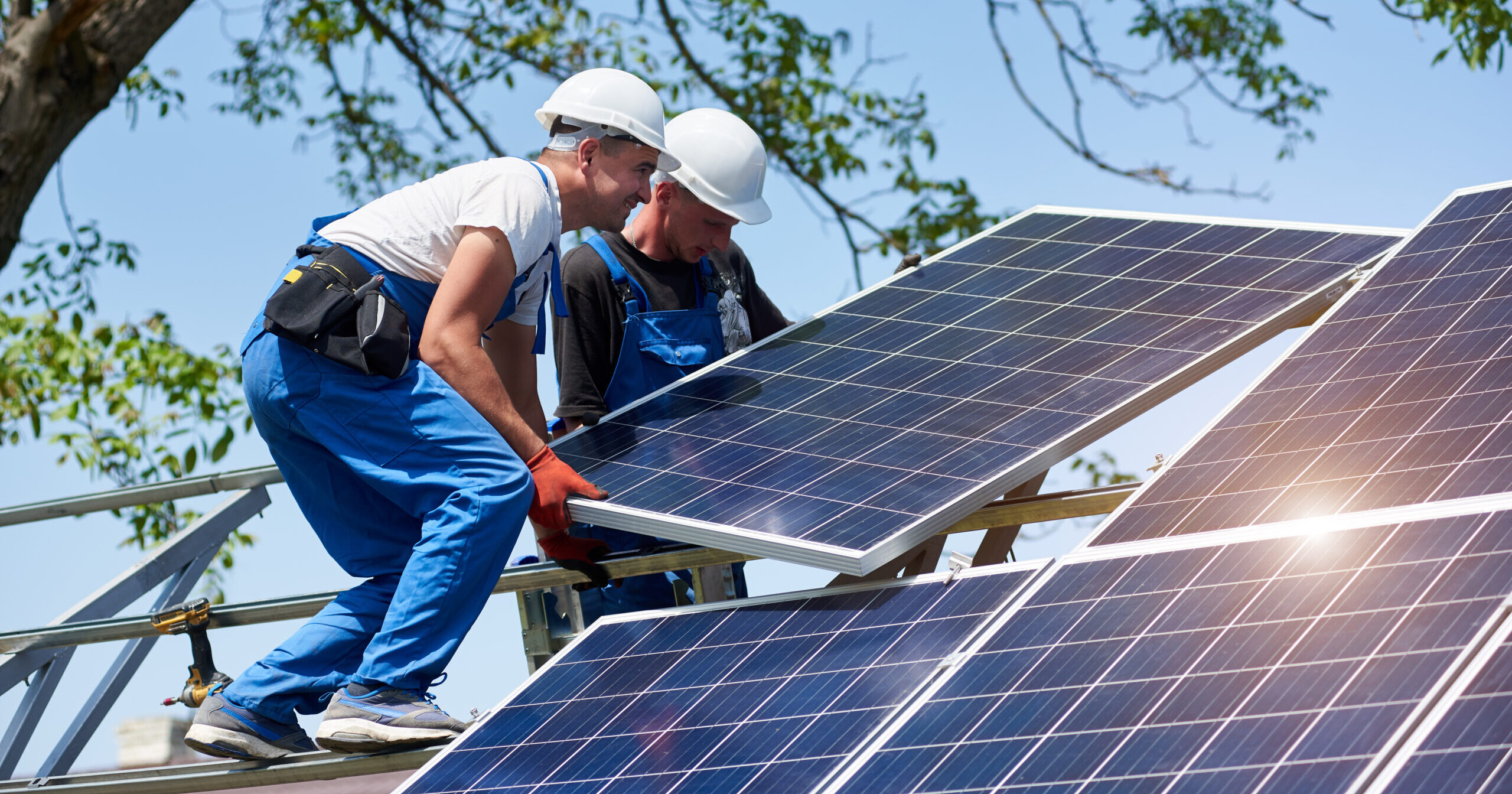Wind power patents: CSSC | Sany | LM Wind Power | Siemens Gamesa – Windpower Monthly

Report on Wind Energy Patent Advancements and Contributions to Sustainable Development Goals (11-17 July)
This report outlines recent patents processed in the wind power sector, highlighting their alignment with the United Nations Sustainable Development Goals (SDGs). These innovations contribute primarily to SDG 7 (Affordable and Clean Energy), SDG 9 (Industry, Innovation, and Infrastructure), SDG 12 (Responsible Consumption and Production), and SDG 13 (Climate Action).
Asia Pacific Region
Innovations in the Asia Pacific region focus on enhancing the operational monitoring and mechanical integrity of wind energy systems.
- CSSC Wind Power Engineering Tech Tianjin: A patent was granted for an offshore wind power and wind direction monitoring device. This technology supports SDG 7 by improving the efficiency and reliability of clean energy generation and SDG 9 by advancing resilient energy infrastructure.
- Sany Heavy Energy: A patent was secured for an oil receiving disc device for wind turbine generators. This innovation contributes to SDG 7 and SDG 9 by improving the maintenance and operational safety of wind energy assets.
European Region
Patent filings in Europe demonstrate a focus on advanced manufacturing techniques and circular economy principles for wind turbine components.
- LM Wind Power: A patent application was filed for a wind turbine blade shell component. This advancement in blade technology supports SDG 7 by potentially increasing energy capture efficiency and SDG 9 through innovation in renewable energy hardware.
- Siemens Gamesa: A patent application was submitted for a method of positioning a preform component during blade manufacturing. This process innovation enhances industrial efficiency, directly supporting SDG 9 and contributing to the scalability of clean energy production under SDG 7.
- Vestas: An application was filed for a method to prepare and reuse fibre reinforcing material from decommissioned wind turbine blades. This represents a significant contribution to SDG 12 (Responsible Consumption and Production) by creating a circular economy for turbine components. It also strengthens SDG 7 and SDG 13 by reducing the lifecycle environmental impact of wind energy.
North American Region
Patents granted and filed in North America concentrate on optimizing energy output and improving the serviceability and construction of wind turbines.
- Siemens Gamesa:
- A patent was granted for a system to optimize the power output of a wind turbine with yaw misalignment. This directly enhances the effectiveness of renewable energy generation, a key target of SDG 7 and a crucial tool for SDG 13.
- A separate patent application was filed for a method of servicing wind turbine components that allows data transfer during replacements. This supports SDG 9 by innovating maintenance processes to ensure the resilience and efficiency of clean energy infrastructure.
- Vestas:
- Two patents were granted for tool assemblies used to tension tower bolts in wind turbine towers. These tools improve the safety, reliability, and efficiency of wind turbine construction and maintenance, contributing to SDG 9 by building robust and resilient infrastructure for the clean energy sector as outlined in SDG 7.
Analysis of SDGs in the Provided Article
1. Which SDGs are addressed or connected to the issues highlighted in the article?
The article, which details new patents in wind power technology, directly and indirectly connects to several Sustainable Development Goals. The primary focus on advancing renewable energy technology establishes a clear link to the following SDGs:
- SDG 7: Affordable and Clean Energy: The entire article is centered on innovations in wind power, a key source of clean and renewable energy.
- SDG 9: Industry, Innovation, and Infrastructure: The article’s content, which is a list of patents, is a direct testament to innovation. These technological advancements contribute to building resilient and sustainable energy infrastructure.
- SDG 12: Responsible Consumption and Production: One of the patents specifically addresses the recycling of wind turbine components, which aligns with goals for reducing waste and promoting a circular economy.
- SDG 13: Climate Action: By improving the efficiency, manufacturing, and sustainability of wind turbines, these innovations contribute to the global effort to combat climate change by providing alternatives to fossil fuels.
2. What specific targets under those SDGs can be identified based on the article’s content?
Based on the specific technological advancements mentioned, the following targets can be identified:
SDG 7: Affordable and Clean Energy
- Target 7.2: By 2030, increase substantially the share of renewable energy in the global energy mix. The patents for optimizing power output (Siemens Gamesa) and improving turbine components (Sany Heavy Energy, LM Wind Power) directly support making wind energy more efficient and scalable, thus helping to increase its share in the energy mix.
- Target 7.a: By 2030, enhance international cooperation to facilitate access to clean energy research and technology… and promote investment in energy infrastructure and clean energy technology. The article highlights patents from companies across Asia, Europe, and North America (CSSC, Sany, Siemens Gamesa, Vestas), showcasing global research and development in clean energy technology.
SDG 9: Industry, Innovation, and Infrastructure
- Target 9.4: By 2030, upgrade infrastructure and retrofit industries to make them sustainable, with increased resource-use efficiency and greater adoption of clean and environmentally sound technologies. The patent by Vestas for “preparing fibre reinforcing material from decommissioned wind turbine blades” is a direct example of creating a more sustainable industrial process for the wind energy sector.
- Target 9.5: Enhance scientific research, upgrade the technological capabilities of industrial sectors… encouraging innovation and substantially increasing the number of research and development workers. The very existence of these patents from multiple global companies is evidence of ongoing R&D and innovation aimed at upgrading the technological capabilities of the wind power industry.
SDG 12: Responsible Consumption and Production
- Target 12.2: By 2030, achieve the sustainable management and efficient use of natural resources. The Vestas patent for a method to “extract and reprocess longitudinal fibre elements for reuse” from old blades directly addresses the sustainable management of materials used in the energy sector.
- Target 12.5: By 2030, substantially reduce waste generation through prevention, reduction, recycling and reuse. The same Vestas patent is a clear example of developing technology for recycling and reuse, which is critical for reducing the waste generated by decommissioned wind farms.
SDG 13: Climate Action
- Target 13.2: Integrate climate change measures into national policies, strategies and planning. While not mentioning policies directly, the article demonstrates the technological advancements that are essential for implementing policies aimed at climate change mitigation through renewable energy.
3. Are there any indicators mentioned or implied in the article that can be used to measure progress towards the identified targets?
The article does not mention official SDG indicators, but it provides information that can serve as proxies or direct evidence for measuring progress:
Implied Indicators:
- Number of patents in renewable energy technology: The entire article is a list of patents. This can be used as a proxy indicator for Target 9.5 (enhancing scientific research and innovation) and Target 7.a (advancements in clean energy technology). The specific patents listed for CSSC, Sany, LM Wind Power, Siemens Gamesa, and Vestas are data points for this indicator.
- Development of technologies for waste reduction and material reuse: The description of the Vestas patent for reprocessing decommissioned blades serves as a qualitative indicator for progress towards Target 12.5. It demonstrates a tangible effort to reduce waste in the renewable energy industry.
- Innovations for increased energy efficiency: The Siemens Gamesa patent for a “method and system for optimising power output of a wind turbine” is a specific example of an innovation that contributes to Target 9.4 (increased resource-use efficiency) and Target 7.2 (increasing the share of renewable energy by making it more productive).
4. Table of SDGs, Targets, and Indicators
| SDGs | Targets | Indicators (Identified or Implied in the Article) |
|---|---|---|
| SDG 7: Affordable and Clean Energy | 7.2: Increase substantially the share of renewable energy. 7.a: Facilitate access to clean energy research and technology. |
Patents for optimizing power output (Siemens Gamesa) and improving turbine components (Sany, LM Wind Power), indicating technological advancement to increase efficiency and scalability. |
| SDG 9: Industry, Innovation, and Infrastructure | 9.4: Upgrade infrastructure and retrofit industries to make them sustainable. 9.5: Enhance scientific research and encourage innovation. |
The number and nature of patents filed by companies like Vestas, Siemens Gamesa, etc., serve as a direct indicator of innovation and R&D spending in the sector. |
| SDG 12: Responsible Consumption and Production | 12.2: Achieve the sustainable management and efficient use of natural resources. 12.5: Substantially reduce waste generation through recycling and reuse. |
The specific patent by Vestas for a “method of preparing fibre reinforcing material from decommissioned wind turbine blades” for reuse is a direct indicator of progress in creating circular economy solutions. |
| SDG 13: Climate Action | 13.2: Integrate climate change measures into policies and planning. | The development of advanced renewable energy technologies (as evidenced by all the patents) is an implied indicator of the industrial capacity being built to meet climate action goals. |
Source: windpowermonthly.com

What is Your Reaction?
 Like
0
Like
0
 Dislike
0
Dislike
0
 Love
0
Love
0
 Funny
0
Funny
0
 Angry
0
Angry
0
 Sad
0
Sad
0
 Wow
0
Wow
0












































































